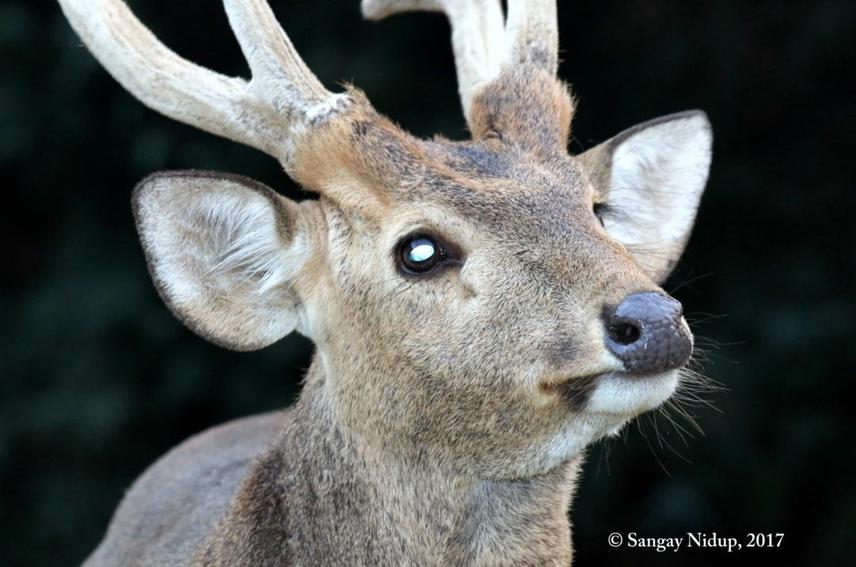Sangay Nidup
To assess the habitat use, conservation threats and to identifies the crop depredation with imparting advocacy to communities in the fringe of RMNP.

Hog deer (Axis porcinus) are native to southern Bhutan and listed as Endangered by the IUCN and in Appendix I of CITES, but the species have not been studied in the country so far. It has not been listed in Schedule I in Forest and Nature Conservation Act of Bhutan failing to prioritise for the conservation strategy for the declining species.
Hog deer are nocturnal ungulate, relatively small deer with dark brown to yellow-brown fur and white-tipped tails. Hog deer habitat is severely fragmented and steeply declining due to numerous anthropogenic activities. Habitat loss added by the negative attitude of peoples toward Hog deer has threatened the population of endangered species. Thus, it is imperative to understand the habitat scenario and current conservation threats to formulate relevant conservation management in the buffer zone of RMNP.
The current project will cover in four blocks within the buffer zone of RMNP. The open-ended and closed-ended questions will be used for collecting data on Hog Deer conflict, people’s perception and sighting sites for distribution map. Public advocacy will be conducted to disseminate the outcome of the project to motivate for the conservation of Hog deer and its habitat. Habitat use will be measured by the abundance of pellet groups and tracks counted along line transect, using established line transects methods (Wegge, 1976). In each type of habitat, a series of well-spaced line transects (100m separation where possible) will be laid across agricultural fields perpendicular to the edge of the field closest to the forest or other natural habitat used by Hog Deer. The indirect method of tracks and other signs; hoof impressions on the soft ground, hair and pellet samples will be used for detecting the presence of the species. The camera traps will be set along trails and attached on a tree or pole at about 50 cm above ground. Cameras with fast trigger speed (1/2 second or less) will set at about 2 m back from the trail to allow taking picture of a wide range of animals (Rovero, 2004).
This project will help to assess the Human Hog Deer conflict and shall provide recommendations for further conservation strategies in harmonic co-existence with the local people in shared landscape. This Project will generate baseline data and document the conservation plan through participatory approaches to guide the conservation of this declining and endangered species in this globe.